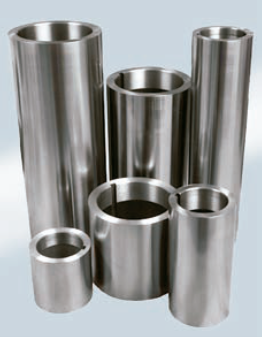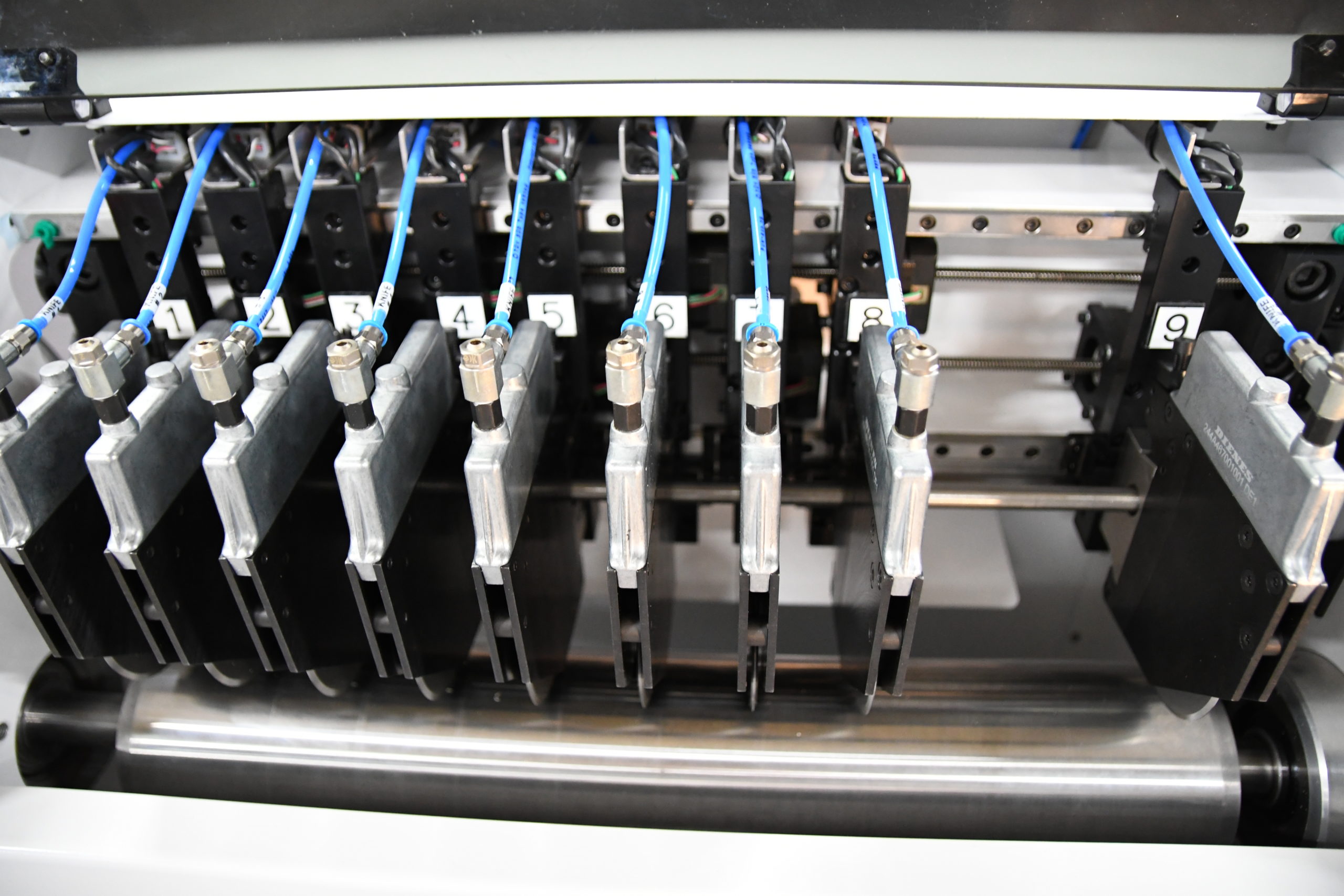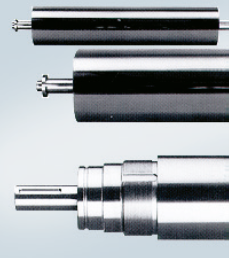
Welcome to the latest entry to the Dienes slitting blog. In some of our previous entries, we have discussed all the factors that affect score cutting quality. We have also listed a few of the most common problems with this slitting method and how to troubleshoot them. However, we have not discussed the importance of a quality anvil roll in your crush cutting process.
Overview of Anvil Rolls
In this blog post, we will do just that. The quality and state of the anvil roll are critical to have a smooth crush cutting operation. And without further ado, let us begin with our article.
As mentioned before, crush or score cutting uses brute force to penetrate a knife blade through materials. Usually, a pneumatic-powered knife blade holder applies the force against a hardened anvil roll.
Performing this type of slitting method cannot be done mid-air as it forcefully requires the anvil roll. Both to support the material and help the holder apply the force to separate the material. Therefore, the importance of a quality anvil roll for this operation can significantly affect the outcome.
The anvil must be very smooth, geometrically accurate (round with minimum run-out). It must also have sufficient hardness to outlive the knife blade.
Anvil roll run-out should not exceed 0.004” (0.10mm). This is extremely important because as run out increases, the blade life will shorten.
The size of the anvil roll is also very important. However, sometimes it is not always taken into consideration in certain applications.
The Importance of a Quality Anvil Roll: Size
One of the most common problems found in the field is the anvil roll can be too small. It may not be able to handle the load and force applied to it by the holders. Therefore, deflection is present in this roll. This can lead to problems with the cut. The web is not fully supported, and the forces are not evenly distributed throughout the entire web.
Unfortunately, there is not a general rule for the size of the anvil roll. This is because each application is different. The differences include:
- Different number of holders engaging.
- Different types of holders; each have bigger, smaller, or even multiple pneumatic cylinders applying the force onto the roll.
Therefore, we recommend always check if there is any deflection present in the anvil roll once the holders are engaged. And if so, try to address this problem by having a bigger roll that can withstand the applied load.
Additional Factors for a Quality Anvil Roll: The Impact of Grooves
Other important factors to consider for the anvil roll:
- The material from which it is made.
- The hardness it must have.
As mentioned above, the roll should have sufficient hardness to outlive the knife blade. An anvil roll that is softer than the supporting blades will make a groove cause problems.
Grooves in your anvil that are deeper than 0.002” can be a major factor in some problems. Grooved anvil rolls lead to a variety of issues such as:
- Premature knife wear
- Inconsistency in the cut
- Poor cutting-edge quality
- Increased wear on the holder and internal components
- and more.
Despite this, grooves on the anvil roll are one of the most common problems presented in crush cutting. But sometimes, these are not due to the quality of the roll itself. As grooves can also appear as a cause of work hardening or surface shear.
Fatigue Failure
When a fatigue failure occurs, and the blade can continue running, it will “work-harden” to a hardness higher than the anvil roll. Fatigue failure occurs either one of two ways. It can either run the crush cut blade at yield strength limits. Or it can be due to high impact loading that causes blade chipping. Gouging (grooving) of the anvil roll and a poor cut edge quality will result from this. Try to avoid this because anvil rolls are more expensive than holder blades. Also, a longer production downtime occurs when replacing blades only.
The Importance of a Quality Anvil Roll and the Surface Impact
Another problem that arises with the anvil rolls is surface shear or anvil roll pitting. This develops over time from an ongoing applied force running against the roll. Again, another reason why the importance of a quality anvil roll is so critical.
Roll material below the surface enters a fatigue failure mode and begins to break down. This begins as roll pitting, and if a lubricant is in use, an effect like a street pothole takes place. Under the surface, water sees the load from a passing automobile. Creating short term very high-pressure spikes that erode the roads’ ability to support vehicles’ weight.
The operating reality is that because of shock impact and fatigue, eventually, the anvil surface will require resurfacing (precision grinding) or replacement. And for that reason, the next section is critical. As there are two different types of rolls: case hardened rolls and through hardened rolls.
Case Hardening
Case hardening of solid shafts provides a less expensive way to fit many applications. The downside of case hardening is that the amount of hardness varies with depth into the shaft. With each regrind, the case hardness level will lower. Remembering that a typical anvil hardness is only 0.5 to 5 Rockwell Rc points harder than the blade running against it. Consecutive regrinds can quickly make the shaft useless.
Through Hardening
Through hardened or near through hardened sleeves offer:
- Operating flexibility.
- Longer anvil life.
- Less costly replacement.
Anvil sleeves slide over the shaft with a very close tolerance fit to lessen run-out effects. Radically adjusting high-end sleeves can be for dimensionally true rotation. They are typically keyed to the shafts and secured by locknuts on both ends of the shaft.

- Loosen the lock-nuts and shift the sleeve(s) along the shaft to offer a fresh surface to the crush blade.
When regrinding through hardened sleeves is required, even after many regrinds, the surface hardness is hardly compromised. Anvil sleeves have a higher up-front cost that is easily balanced by multiple regrind capability and repositioning flexibility.
The Importance of Quality Anvil Rolls: Conclusion
Now you know some additional reasons why choosing a quality anvil roll is critical to your crush cutting application. The importance of a quality anvil roll is significant to the overall slitting process. And here at DIENES, we offer a wide selection of through hardened sleeves to all our customers. We think this is the most efficient way to ensure the quality of the crush cutting application. While also minimizing downtime and waste created by undesired effects. However, if you are unsure if your current anvil roll is right for your process, do not hesitate to reach out to one of our slitting experts. We will answer any questions that you have!
Follow us on LinkedIn or Facebook for similar articles like this one!



